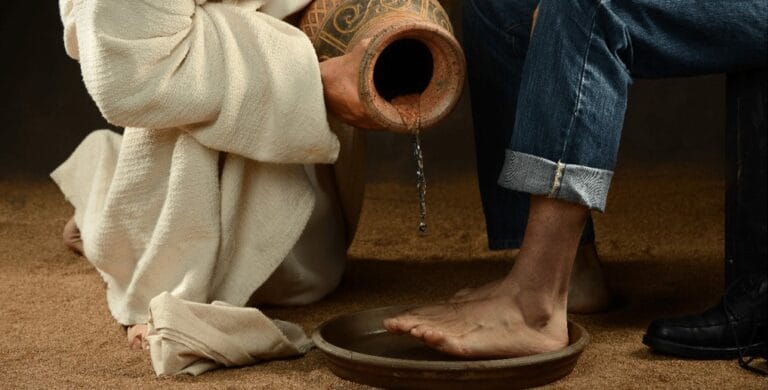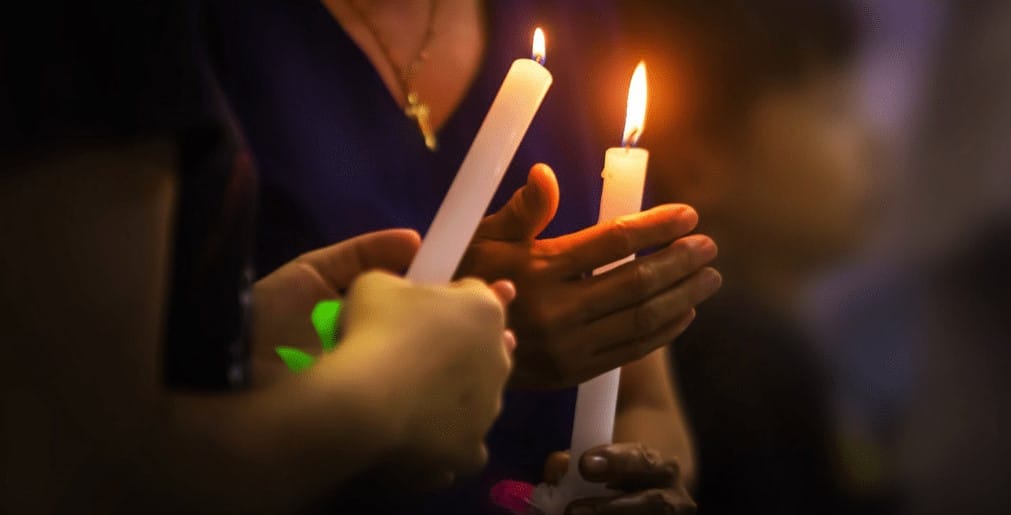Easter Triduum reflections

Holy Thursday: reconciliation
Leonardo da Vinci’s The Last Supper is one of the most iconic artworks in the world. It takes a snapshot of the apostles’ expressions of shock and anger as they react to Jesus’ declaration: “One of you will betray me.” The late Lasallian Brother Nicholas Hutchinson tells the story of how, when Leonardo was deciding how to paint the faces and postures of each of the 13 figures in the painting, he thought of a man who was bitterly jealous of him.
This man had slandered Leonardo and turned others against him. To get revenge, Leonardo thought of painting his enemy’s face as that of Judas, the traitor. He told a few friends what he intended to do, and they all waited in glee and anticipation. Two years later, when the masterpiece was finally unveiled, they were astounded to see the face of Leonardo’s enemy, not in Judas, but in Jesus.
Leonardo had nobly refused to shame him in public through the painting, instead showing everyone the image and likeness of Christ in him. Leonardo’s act of humility and charity reconciled him with his bitter rival and transformed him into a lifelong admirer and friend.
Are we willing to do the same – to reconcile instead of retaliating, forgive instead of fomenting?

Image: Christ carrying the cross by El Greco, circa 1580-85.
Good Friday: repentance
St Luke tells us that Jesus was crucified before a sneering and jeering crowd of common people, religious leaders and pagan soldiers with two thieves to his right and left. “One of the criminals hanging there abused him: ‘Are you not the Christ? Save yourself and us as well.’ But the other spoke up and rebuked him. ‘Have you no fear of God at all?’ he said. ‘We got the same sentence as he did, but in our case we deserved it: we are paying for what we did. But this man has done nothing wrong.’ Then he said: ‘Jesus, remember me when you come into your Kingdom.’ Jesus answered: ‘I tell you, today you will be with me in Paradise.’” (Luke 23:39-43)
The Good Thief was not afraid to speak the truth before everyone: (i) he pleaded guilty to his crime by making a public confession; (ii) he acknowledged what everyone refused to admit, that Jesus was innocent of any wrongdoing; (iii) he professed his faith in Jesus of Nazareth, King of the Jews, exactly as inscribed on the crucifix (which is what INRI stands for in Latin: Iesus Nazarenus, Rex Iudaeorum). For this great act of courage and witness, the Church reveres him today as St Dismas, and his feast day is on March 25 (though many are unaware of this as it is always overshadowed by the Solemnity of the Annunciation of Our Lord).
Are we willing to do the same – to repent and believe in the Gospel, to proclaim and witness to Truth?

Easter vigil: redemption
The Apostles’ Creed affirms our belief that Jesus “descended into hell” after his passion and death. The Orthodox Church has a beautiful portrayal of what Christ accomplished on Holy Saturday – the Icon of the Resurrection. The Catechism of the Catholic Church, CCC 632, teaches that Jesus did not descend passively into the realm of the dead (Sheol in Hebrew or Hades in Greek) as mere man and victim, but triumphantly as God and Saviour, “proclaiming the Good News to the spirits imprisoned there.” (1 Peter 3:18-19) The icon depicts Christ wearing all-white garments because He is “the light that shines in darkness, and darkness could not overpower it.” (John 1:5).
He is shown standing on the gates of the underworld, with the Devil bound hand and foot beneath His feet. Broken locks and twisted keys are strewn all around because: “I am the Living One, I was dead, and look! I am alive forever and ever, and I hold the keys of death and of Hades” (Revelation 1:18).

Central to the icon is our Lord setting Adam and Eve free from the depths of Sheol, pulling them up and out not by the hands, but by the wrists, symbolising that fallen humanity’s freedom from death is entirely God’s initiative. To His right and left stand key figures of righteousness in the Old Testament who died in expectant faith waiting for the Messiah – as CCC 633 explains: “It is precisely these holy souls… whom Christ the Lord delivered when He descended into hell. Jesus did not descend into hell to deliver the damned, nor to destroy the hell of damnation, but to free the just who had gone before Him.” They stand with their hands reaching out to Christ, waiting in turn to be set free.
Are we willing to do the same – to let Him set us free from the depths of our personal Sheols so that we can love and serve Him, and His Body?
Footnote: Reflections courtesy Catholic News.
We encourage you to share and use this material on your own website. However, when using materials from Majellan Media’s website, please include the following in your citation: Sourced from www.majellan.media
